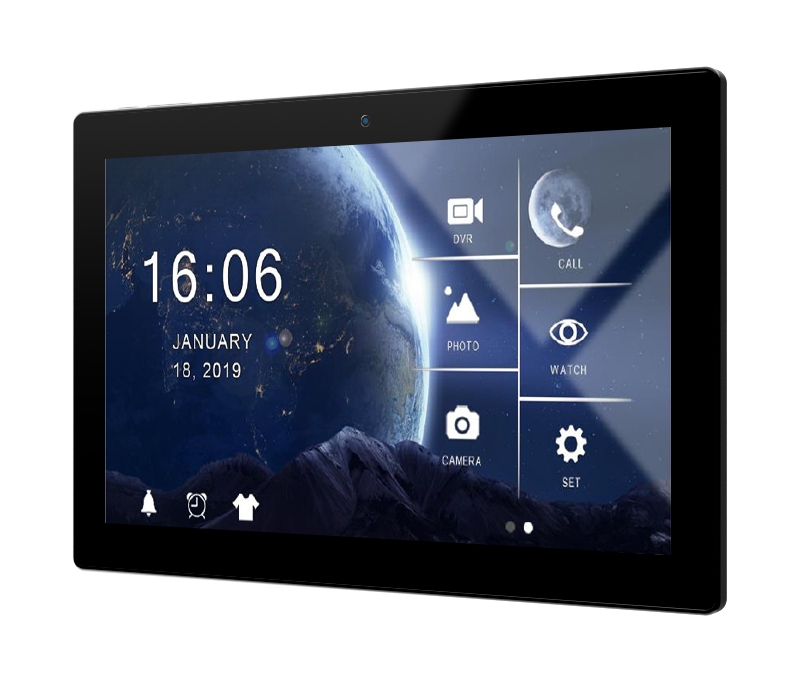Choosing the Right Touchscreen Monitor for Your PC: A Simple Guide
As technology advances, touchscreen monitors have become a popular choice for PC users. They bring convenience, efficiency, and a modern touch to any setup. But with so many options on the market, how do you choose the right one? In this guide, we’ll walk you through the essentials of selecting the best touchscreen monitor for your PC.
1. Understanding the Basics: What is a Touchscreen Monitor?
A touchscreen monitor is a display that allows you to interact directly by touching the screen. This differs from a standard monitor that requires a mouse or keyboard. With a touchscreen, you can tap, swipe, or pinch to navigate, making it intuitive and engaging.
These monitors are commonly used for creative work, business presentations, education, and gaming. They enhance productivity and can turn any desk into a high tech workspace.
2. Key Features to Consider When Choosing a Touchscreen Monitor
When looking for a touchscreen monitor, there are several factors to keep in mind. Here’s what to consider:
Screen Size and Resolution
Size and resolution are crucial. Monitors range from smaller, portable models around 10 inches, up to large 32 inch displays. Higher resolution, such as Full HD (1080p) or 4K, provides clearer images. Decide based on your workspace, preference, and purpose. For everyday tasks, a 24 inch Full HD monitor is usually sufficient.
Touch Technology: Resistive vs. Capacitive
Two main types of touch technologies are used: resistive and capacitive.
Resistive Touchscreen : These respond to pressure and work well with a stylus or any touch object. They’re generally more affordable but less sensitive, so multitouch gestures like pinching aren’t as smooth.
Capacitive Touchscreen : Found in most smartphones and tablets, capacitive screens are sensitive and support multitouch gestures. They only work with fingers or capacitive styluses, offering a more seamless and precise experience.
For smooth multitouch and enhanced responsiveness, choose a capacitive touchscreen if your budget allows.

Connectivity Options
Check that the monitor has the right ports for your setup. HDMI and DisplayPort connections are common, but if you plan to connect to older devices, VGA might be necessary. For extra convenience, some monitors have USB C or USB A ports that allow fast data transfer and charging.
Adjustable Stand and Mounting Options
If you’ll be using the monitor daily, an adjustable stand or VESA mount compatibility can make a huge difference. Look for options that let you tilt, swivel, or adjust the height. This flexibility ensures you can find the perfect angle, reducing strain on your neck and eyes.
Color Accuracy and Brightness
For those using the monitor for creative work, such as graphic design or photo editing, color accuracy is essential. Look for monitors with high sRGB coverage or even Adobe RGB if your budget allows. Brightness is also important; a brightness level of around 250 350 nits works well for indoor use.
3. Advantages of Touchscreen Monitors for PC
Why choose a touchscreen monitor for your PC? Here are some benefits:
Improved Productivity : Touchscreen monitors can simplify tasks, especially when dealing with multiple programs or windows. It’s quicker to tap or swipe than navigate with a mouse.
Enhanced Interaction : For businesses or schools, touchscreen monitors make presentations more dynamic and interactive, keeping viewers engaged.
More Natural Navigation : For some people, interacting with a touchscreen feels more intuitive. If you’re used to a smartphone or tablet, a touchscreen monitor will feel like second nature.
Creative Freedom : Designers, photographers, and artists benefit from direct interaction with their work. Drawing, selecting, or editing feels more organic when done directly on the screen.
4. Top Use Cases for Touchscreen Monitors
Touchscreen monitors aren’t just for any desk. Here are some specific use cases where they shine:
In Business and Retail : Many businesses use touchscreen monitors for customer service or checkout counters. They streamline transactions and are easy for employees to use.
In Classrooms : Touchscreens make learning more interactive, helping teachers present information in an engaging way. Students can tap, swipe, and interact with content directly.
For Creative Professionals : Artists and designers benefit from the hands on approach a touchscreen monitor offers. This setup provides a more natural workflow for editing, drawing, and designing.
In Home Entertainment : Watching movies or playing games on a touchscreen monitor adds an immersive, interactive element to home entertainment.
5. Budget Friendly vs. Premium Options
Touchscreen monitors are available at a wide range of prices, so it’s easy to find one that fits your budget. Let’s break down the main differences between budget friendly and premium options:
Budget Friendly Monitors : Typically cost under $300, with basic features like 1080p resolution and resistive touchscreens. They’re great for casual use or as a secondary monitor.
Mid Range Monitors : Priced between $300 and $600, these monitors usually have Full HD or 4K resolution and capacitive touchscreens. They balance quality with affordability.
Premium Monitors : Cost $600 or more and are packed with features like 4K resolution, high color accuracy, and advanced touch technology. Ideal for professionals, they offer the best visual and interactive experience.
6. Tips for Setting Up Your Touchscreen Monitor
Once you’ve chosen your touchscreen monitor, here are a few setup tips:
1. Position Correctly : Place the monitor so you can reach the screen comfortably without stretching your arm too far.
2. Calibrate the Touchscreen : Many monitors have calibration options to improve touch accuracy. This is especially useful for graphic designers.
3. Keep It Clean : Touchscreens get fingerprints easily. Use a soft, lint free cloth to clean the screen regularly.
4. Adjust Brightness and Color Settings : Most monitors allow you to customize brightness, contrast, and color. Adjust these settings to reduce eye strain and ensure the best image quality.


